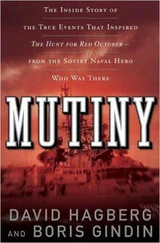By now, the two immense, four-barreled iron try-pots were full of pieces of blubber. To hasten the trying-out process, the blubber was chopped into foot-square hunks, then cut through into inch-thick slabs that resembled the fanned pages of a book and were known as bible leaves. A whale’s blubber bears no similarity to the fat reserves of terrestrial animals. Rather than soft and flabby, it is tough, almost impenetrable, requiring the whalemen to resharpen their cutting tools constantly.
Wood was used to start the fires beneath the try-pots, but once the boiling process had begun, the crispy pieces of blubber floating on the surface of the pot—known as scraps or cracklings—were skimmed off and tossed into the fire for fuel. The flames that melted down the whale’s blubber were thus fed by the whale itself. While this was a highly efficient use of materials, it produced a thick pall of black smoke with an unforgettable stench. “The smell of the burning cracklings is too horribly nauseous for description,” remembered one whaleman. “It is as though all the odors in the world were gathered together and being shaken up.”
At night the deck of the Essex looked like something out of Dante’s Inferno. “A trying-out scene has something peculiarly wild and savage in it,” stated a green hand from Kentucky, “a kind of indescribable uncouthness, which renders it difficult to describe with anything like accuracy. There is a murderous appearance about the blood-stained decks, and the huge masses of flesh and blubber lying here and there, and a ferocity in the looks of the men, heightened by the red, fierce glare of the fires.” It was a scene that perfectly suited Melville’s sinister artistic purposes in Moby-Dick. “[The] darkness was licked up by the fierce flames,” Ishmael tells us, “which at intervals forked forth from the sooty flues, and illuminated every lofty rope in the rigging, as with the famed Greek fire. The burning ship drove on, as if remorselessly commissioned to some vengeful act.”
Trying out a whale could take as long as three days. Special try watches were set, lasting between five and six hours, and affording the men scant sleep. Experienced whalemen knew enough to sleep in their trying-out clothes (usually an old short-sleeved shirt and a worn pair of woolen drawers), postponing any attempts at cleaning themselves until the casks of oil had been stored in the hold and the ship had been thoroughly scrubbed down. Nickerson and his friends, however, were so revolted by the noisome mixture of oil, blood, and smoke covering their skin and clothes that they changed after every watch. By the time the first whale had been tried out, they had ruined nearly every piece of clothing stored in their sea chests.
This forced them to purchase additional clothing from the ship’s slop chest—the nautical equivalent of the company store—at outrageous prices. Nickerson estimated that if the Essex ever made it back to Nantucket, he and his fellow green hands would owe the ship’s owners close to 90 percent of their total earnings from the voyage. Instead of warning the teenagers about the potential perils of dipping into the slop chest, the ship’s officers were content to let them learn the economics of whaling life the hard way. Nickerson’s judgment: “This should not have been.”
ONE night, not far from the Falkland Islands, the men were up in the rigging, reefing the topsails, when they heard a scream: a sharp, shrill shriek of terror coming from alongside the ship. Someone had apparently fallen overboard.
The officer of the watch was about to give the order to heave to when a second scream was heard. And then, perhaps with a nervous laugh, someone realized that it wasn’t a man but a penguin, bobbing beside the ship, piercing the night with its all-too-human cries. Penguins! They must be nearing Antarctica.
The next day the wind vanished, leaving the Essex to languish in a complete calm. Seals played about the ship, “plunging and swimming as though they desired our attention,” Nickerson remembered. There were several varieties of penguins, along with gulls and gannets pinwheeling in the sky—a sure sign that the Essex was approaching land.
While the seals and birds may have provided a distraction, morale about the Essex had reached a nadir. So far it had been a slow and unprofitable slog toward Cape Horn. With the knockdown several days out from Nantucket setting the unfortunate tone of the voyage, they had been more than four months at sea and had only a single whale to show for it. If the voyage continued in this fashion, the Essex would have to be out a good deal longer than two years if she were to return with a full cargo of oil. With the temperatures dropping and the legendary dangers of the Horn looming ahead of them, tensions aboard the Essex were reaching the breaking point.
Richard Henry Dana experienced firsthand how the morale of a ship’s crew could deteriorate to the extent that even the slightest incident might be perceived as a horrendous, unbearable injustice:
[A] thousand little things, daily and almost hourly occurring, which no one who has not himself been on a long and tedious voyage can conceive of or properly appreciate—little wars and rumors of wars,—reports of things said in the cabin,—misun-derstanding of words and looks,—apparent abuses,—brought us into a state in which everything seemed to go wrong.
Aboard the Essex , the crew’s discontent focused on the issue of food. At no time were the differences that existed between the officers and the men more pronounced than at mealtimes. In the cabin, the officers ate much as they did back home on Nantucket—on plates, with forks, knives, and spoons, and with plenty of vegetables (as long as they lasted) to add to the ship’s fare of salt beef and salt pork. If there was fresh meat available—as from those thirty Maio hogs—the officers were the ones who enjoyed most of it. As an alternative to hardtack (biscuits with the consistency of dried plaster), the steward regularly provided the officers with freshly baked bread.
The men in the forecastle and steerage enjoyed an entirely different dining experience. Instead of sitting at a table to eat, they sat on their sea chests around a large wooden tub, known as a kid, containing a hunk of pork or beef. Referred to as horse or junk, the meat was so salty that when the cook placed it in a barrel of saltwater for a day (to render it soft enough to chew), the meat’s salt content was actually lowered. The sailors were required to supply their own utensils, usually a sheath knife and a spoon, plus a tin cup for tea or coffee.
Rather than the heaping portions provided to the officers, those before the mast were given only a negligible amount of this less-than-nutritious fare, their daily diet of hardtack and salt beef occasionally augmented with a little “duff,” a flour pudding or dumpling boiled in a cloth bag. It has been estimated that sailors in the latter part of the nineteenth century were consuming around 3,800 calories a day. It is unlikely that the men in the forecastle of a whaler in 1819 consumed even close to that amount. Complained one green hand on a Nantucket whaler, “Alas, alas, the day that I came a-whaling. For what profiteth a man if he gain the whole world but in the meantime starveth to death?”
One day soon after passing the Falkland Islands, the men went below to find in the kid a ration of meat even paltrier than usual. An impromptu meeting was held. It was decided that no one would touch the meat until the kid had been shown to Captain Pollard and a complaint officially filed. The sailors took their stations on the forward portion of the deck while one of the men, the tub of beef on his shoulder, made his way aft toward the cabin gangway. Nickerson, who had been assigned to tar the netting of the main staysail, was well above the deck and had a good view of the ensuing confrontation.
Читать дальше












